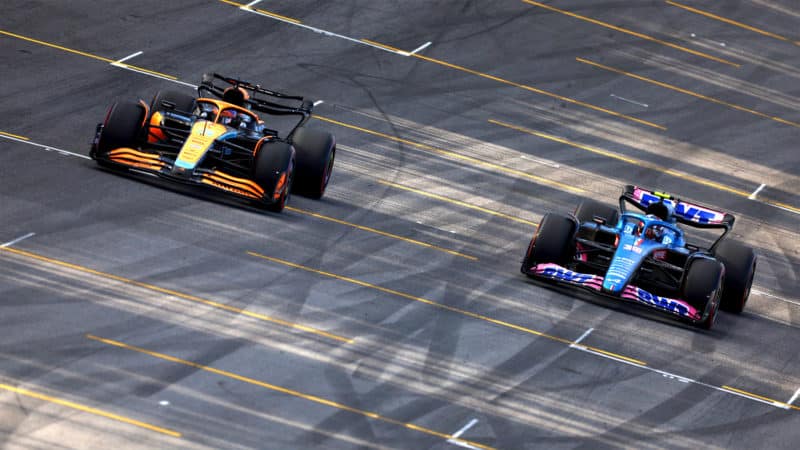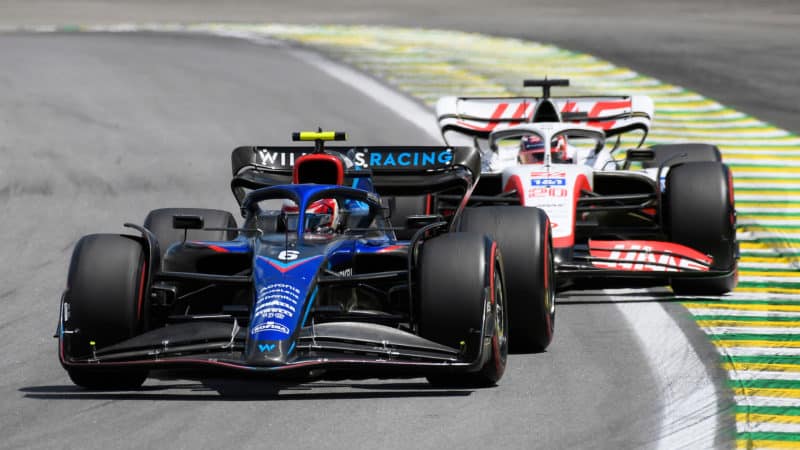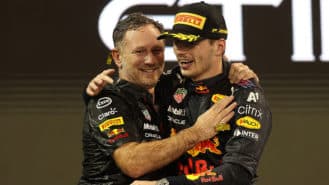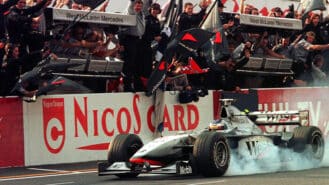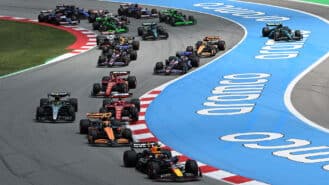In the case of Red Bull the team’s cost cap penalty of minus 10% means that figure actually becomes 63.
It’s worth noting that from 2022 onwards the range of this scale has been much wider. In 2021, when the current cars were being designed, it ran from 90% to 112.5%, with the mean of 100% set at fifth place. In other words there’s now a bigger gap between the most and least successful teams this year – and that may be reflected in the form of next year’s cars, when they first roll out.
To give you an idea of what it all translates into in practical terms, the year is split into six periods. The 100% value per period is 80 hours of wind-on tunnel time, or 320 runs. CFD usage operates on a similar scale, although the terminology used to measure it is a little harder for the layman to grasp.
The full table is as follows, listed with the teams as they now stand in the order and thus their theoretical allocation for January-June next year, unless positions change this weekend, including the tunnel hours for one of the six annual periods:
| Position | Aero allowance | Testing time |
| 1 (Red Bull) | 63%* | 50.4hr |
| 2 (Ferrari) | 75% | 60hr |
| 3 (Mercedes) | 80% | 64hr |
| 4 (Alpine) | 85% | 68hr |
| 5 (McLaren) | 90% | 72hy |
| 6 (Alfa Romeo) | 95% | 76hr |
| 7 (Aston Martin) | 100% | 80hr |
| 8 (Haas) | 105% | 84hr |
| 9 (AlphaTauri) | 110% | 88hr |
| 10 (Williams) | 115% | 92hr |
| *Includes cost cap penalty of 10% | ||
The four-hour difference between neighbouring teams in the order, or 24 hours over the six periods of the year, is not necessarily a game changer. But once you jump two or three spots, the extra time becomes significant, and indeed the gulf between Williams at 92 hours per period and Red Bull at 50.4 is huge.
Of course it’s also a question of quality as well as quantity. No disrespect to Williams, but given where the two teams are as of now, and the fact that by definition RBR has some of the smartest guys aero around, one could assume that an hour of wind tunnel work in Milton Keynes could be more effective than an hour logged by the Grove outfit. Nevertheless, the sheer number of extra hours will help Williams.
“We should prioritise the position in the championship, no?”
As you can see that cost cap penalty will hit RBR hard, and the delta of 50.4 hours to 60 or 64 hours depending in whoever finishes second and third out of Ferrari and Mercedes really could make a difference, given that we can probably assume that those three teams have broadly similar levels of capability.
As noted earlier all of this has opened up a debate – given the aero advantages do you really want to jump a place in the order at this stage in the season? It’s bit like football tournaments where teams look at who they might face in the next stage and have to decide whether it’s better to win the group, or to finish second.
Drivers admit they find the suggestion of not wanting to achieve the maximum a little alien.
“Obviously, there are pros and cons,” says Valtteri Bottas. “And yeah, I think it is the fact that we’re not quite fully at the budget cap. And we could do with some more cash. So for sure, that would help.
“Actually, how much is the difference with the wind tunnel time? For me, it’s hard to calculate. I don’t know the number in detail. I think still we’re pushing to be sixth and to take the money and use that for quite a bit of development. And driver salaries!”
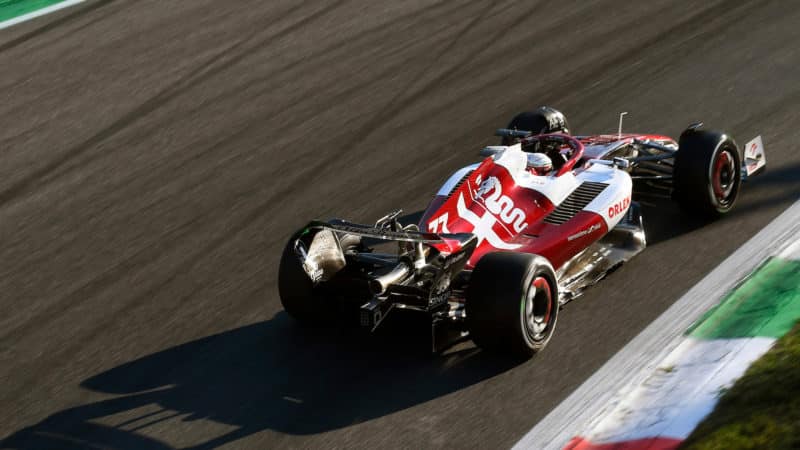
Prize money is key for teams like Alfa, which spend less than the cost cap
Grand Prix Photo
“I think we would take P2,” says Carlos Sainz. “I think these kinds of things, we should prioritise the position in the championship, no? If not, we wouldn’t be fighting for positions in the championship.
“I think the competition is the number one priority and finishing ahead of your competition should always be more satisfying than finishing one position behind and then not getting the wind tunnel or the money.
“So I hope the rules are also designed that your main motivation is to finish ahead. If not, I wouldn’t understand it.”
Teams also say that the increased allowances are not worth sacrificing championship position for. McLaren technical director James Key says that the team is entirely focused on beating Alpine in the constructors’ race: “I don’t even think about that, to be honest How are you going to use extra windtunnel time – to get yourself further up the championship?
“It’s a small percentage, which I guess is kind of useful, it doesn’t compensate for not being a position ahead in the championship wherever you are, because that’s what your ultimate aim is, you know, to climb the ladder. So it’s not even something we thought about.”
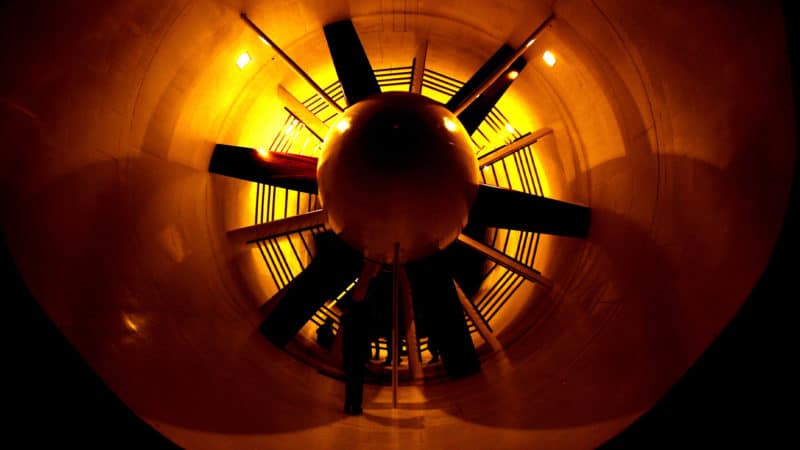
Red Bull wind tunnel will see reduced use in 2023, but is it a “draconian” penalty?
Red Bull
The aerodynamic testing regulations came into focus when the Red Bull penalty was announced. So how much difference will it really make? And was Christian Horner exaggerating when he called it “draconian”?
“The scale of that penalty isn’t much more than what you would lose if you were just one place higher up in the championship,” said Mercedes track engineering boss Andrew Shovlin. “So, it’s not as big as the penalty if your position is two places higher.
“I think, describing it as draconian is an exaggeration. Reducing the number of runs does limit your freedom when you’re developing a concept, but we’re in reasonably well-explored regulations now. But you definitely have to be more efficient.
“But if it were [worth] half a second, which I’ve heard mentioned, then a team at the back of the grid would have over three seconds advantage to one at the front, and that that simply isn’t the case.
“But it depends on how well you make decisions during the year. I’d have thought a tenth, or a bit more than a tenth is probably… Maybe two-tenths at the upper end, is realistically what that would cost you.”
Still that is a difference, and one that Red Bull will now have to overcome. It will be intriguing to see how the formbook looks come the first race in Bahrain.
